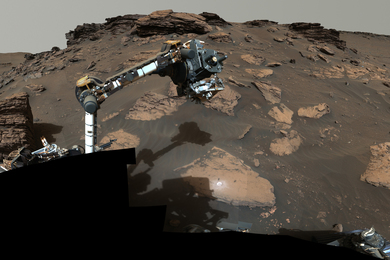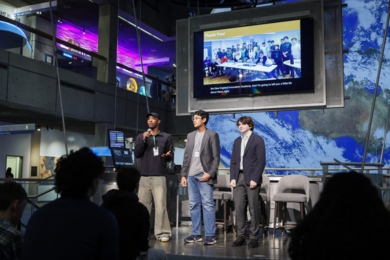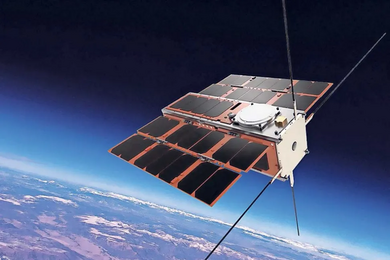Topic
Space, astronomy and planetary science
Download RSS feed: News Articles / In the Media / Audio
3 Questions: Evidence for planetary formation through gravitational instability
Assistant Professor Richard Teague describes how movement of unstable gas in a protoplanetary disk lends credibility to a secondary theory of planetary formation.
When the lights turned on in the universe
By studying ancient, supermassive black holes called quasars, Dominika Ďurovčíková is illuminating an early moment when galaxies could first be observed.
Study: Rocks from Mars’ Jezero Crater, which likely predate life on Earth, contain signs of water
The presence of organic matter is inconclusive, but the rocks could be scientists’ best chance at finding remnants of ancient Martian life.
Scientists pin down the origins of the moon’s tenuous atmosphere
The barely-there lunar atmosphere is likely the product of meteorite impacts over billions of years, a new study finds.
Roadmap details how to improve exoplanet exploration using the JWST
Scientists created the step-by-step guide to unlock the potential of NASA’s James Webb Space Telescope for identifying habitable worlds in the universe.
Astronomers spot a highly “eccentric” planet on its way to becoming a hot Jupiter
The planet’s wild orbit offers clues to how such large, hot planets take shape.
“They can see themselves shaping the world they live in”
Developed by MIT RAISE, the Day of AI curriculum empowers K-12 students to collaborate on local and global challenges using AI.
Study: Titan’s lakes may be shaped by waves
MIT researchers find wave activity on Saturn’s largest moon may be strong enough to erode the coastlines of lakes and seas.
Sarah Millholland receives 2024 Vera Rubin Early Career Award
American Astronomical Society’s Division on Dynamical Astronomy honors the assistant professor and MIT Kavli member for contributions to the dynamics of multi-planet extrasolar systems.
The origin of the sun’s magnetic field could lie close to its surface
Sunspots and flares could be a product of a shallow magnetic field, according to surprising new findings that may help scientists predict space weather.
Using wobbling stellar material, astronomers measure the spin of a supermassive black hole for the first time
The results offer a new way to probe supermassive black holes and their evolution across the universe.
AEROS CubeSat launches to study ocean health
Portugal’s second-ever satellite was developed in collaboration with the MIT Portugal Program.
Newly discovered Earth-sized planet may lack an atmosphere
Circling a cold, Jupiter-sized star, the new world could offer an unobstructed view of its surface composition and history.
Robotic “SuperLimbs” could help moonwalkers recover from falls
A new MIT system could help astronauts conserve energy and extend missions on the lunar surface.














